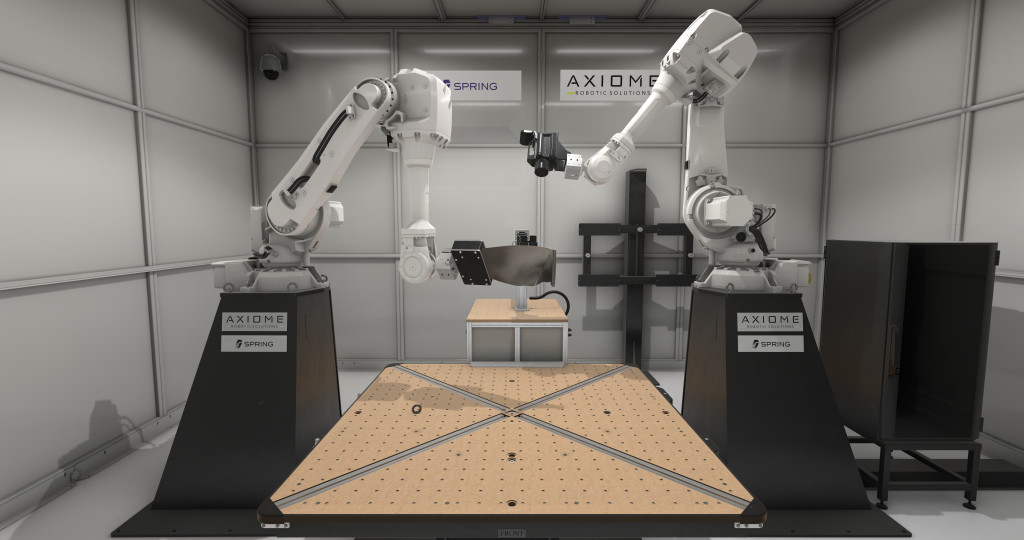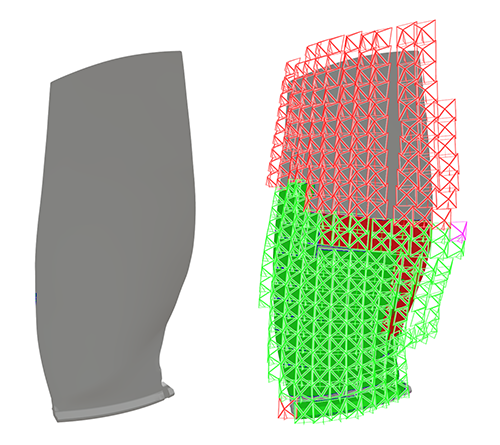
To meet Safran’s optimization needs, we created a digital twin of SPRING that leverages a patented algorithm that automatically calculates all control “poses” and robot trajectories from CAD (computer-aided design) data for the part to be controlled. An alternative to chemical-based testing methods (like penetrant and magnetic particle testing), active infrared thermography is a non-destructive digital method for inspecting surfaces that can be performed 100% robotically—another advantage. Safran currently programs its robotic inspection cells manually. All robot control “poses” are programmed by a roboticist on the actual equipment. Given the complexity of the parts inspected (skewed surfaces, etc.), programming is a long and tedious process.
Plus, the slightest programming error can significantly impact the process, and even cause physical damage to the part being inspected. For Safran, the challenge was to use a functional, physics-based digital twin to eliminate manual programming and make programming the inspection sequence faster and more reliable.

The digital twin, named ADRA, offers a 3D representation of the cell, CEA-List’s real-time physics engine XDE Physics, a functional model incorporating robot controller emulators from ABB, a Siemens PLC emulator, and a Mastermind supervisor, a standard communication protocol developed by Safran. ADRA significantly reduces robot programming time, limits the actual robotic inspection cell’s downtime, and lowers the risk of damage to the part and camera.
CEA-Safran resulting from this project: Automation of robot programming tasks
The developments made for ADRA will provide crucial support to Safran Aircraft Engines inspection digitalization and automation rollout.